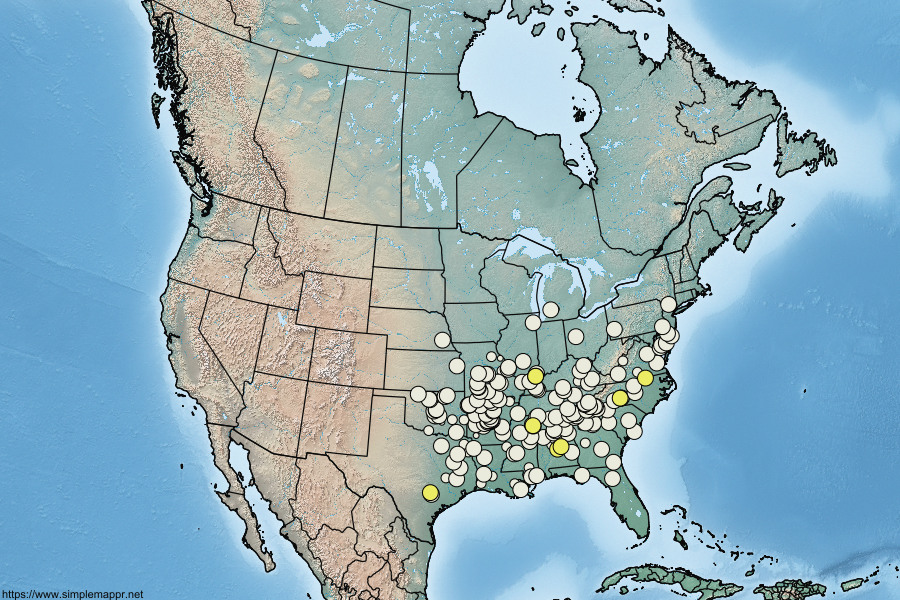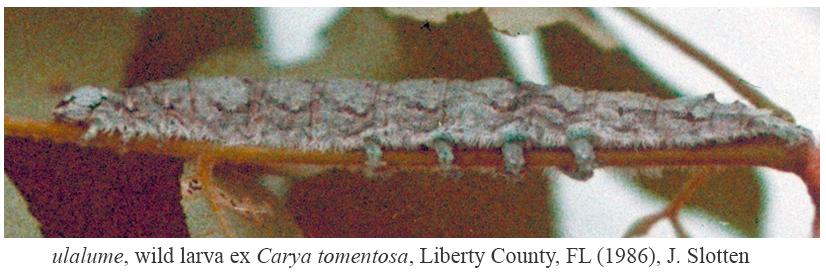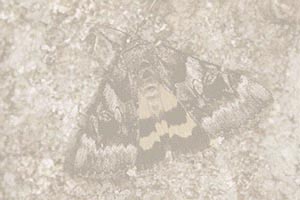 Catocala ulalume
Catocala ulalume
Strecker, 1878
Among the several dozen Juglandaceae-feeding Catocala species,
only
sappho
and
ulalume
are known
to have strongly lichen-mimic forms. This may be the only larval form for sappho and strikingly
so, whereas
ulalume can appear more subdued.
Little is known of their biology but older (1986) ex ovis rearings
from single females of each species offers the following:
larvae of both with head capsules with light reddish gray markings, thin/minimal
mandibular dash, trace of lateral dash above the ocelli; interrupted dark banding subdorsally on body,
small blackish dots ventrally
on A1-A4.
Lateral filaments tend to be short and sparse in
sappho
and longer and more dense in
ulalume;
A5 saddle patch essentially lacking in sappho and present to some extent in ulalume;
lateral band on body mostly connected among segments in sappho and forming an "oscillating" line,
more interrupted in ulalume; stippling on body in sappho mostly coalesced into
distinct areas (note vague grayish "shadow band" between typical subdorsal and lateral bands), the stippling in
ulalume more generalized throughout. The above descriptions are based in part on
preserved mature larvae from each 1986 ex ovis rearing (n=3 sappho, n=5 ulalume). Larval foodplants in the
lab for both are only Carya (Eucarya) hickories,
ulalume recorded from Carya tomentosa in Florida. More information highly
desirable for both species!


|


